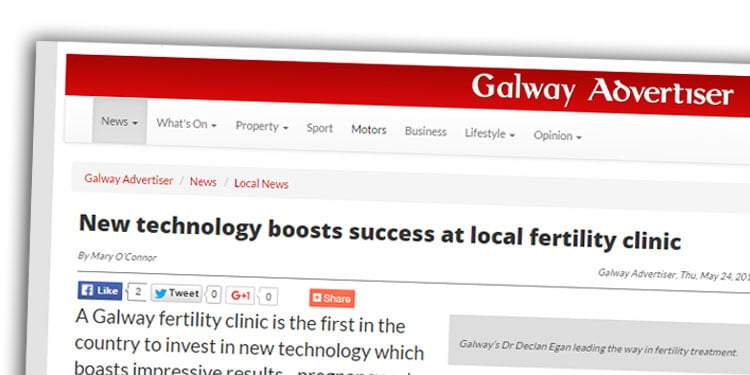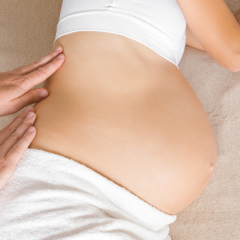
Galway Fertility Clinic is the first in the country to invest in new technology which boasts impressive results – pregnancy rates have increased by 20 per cent.
Dr Declan Egan, the medical director of Galway Fertility, described the new embryoscope incubator system, which cost in excess of €100,000, as arguably the “biggest leap forward” in fertility technology that he has seen in more than 20 years in the business.
The embryoscope allows the embryologist to examine the development of the embryos using a high powered camera system. This compiles images of them every 20 minutes without needing to remove them from the stable environment inside the incubator.
“This is on a par with the development of ICSI [intracytoplasmic sperm injection – an in-vitro fertilisation procedure in which a single sperm is injected directly into an egg] which offers a chance of a baby to the population with very poor sperm,” explained Dr Egan. “We are delighted to have this embryoscope to add to the continuous improvements that we apply to our treatment programmes.”
There are fewer than 100 of these high tech incubators in human in-vitro fertilisation clinics around the world and Galway Fertility has the only one in Ireland.
Jenny Cloherty, the acting laboratory director of Galway Fertility, revealed that from the first 54 cases cultured in the embryoscope, a pregnancy rate of 50 per cent was reported [this is an increase of approximately 20 per cent]. This group included a significant proportion of difficult cases, people who had repeated failed IVF cycles in the past.
Presenting the clinic’s findings at the Irish Fertility Society’s AGM in Dublin recently she outlined that in addition to this, 39 per cent of the cases resulted in additional viable embryos for freezing. This should give the couples involved another chance of a pregnancy from the same cycle.
Galway Fertility, which was originally located at University Hospital Galway but is now based in Rahoon, said extensive recently published evidence, particularly from research groups in Spain and Scandinavia, describes new dynamic parameters in embryo development which correlate well with a greater potential for implantation.
“We now have the facility to use this new information and apply the knowledge to our embryo selection during IVF. The ideal aim in a cycle of IVF is to transfer just one good quality blastocyst giving the safest pregnancy outcome for the woman and baby. The improved culture environment provided by the embryoscope has increased blastocyst development rates per cycle, providing more for cryopreservation, offering our couples a higher cumulative pregnancy rate per cycle.”
Source: Galway Advertiser













